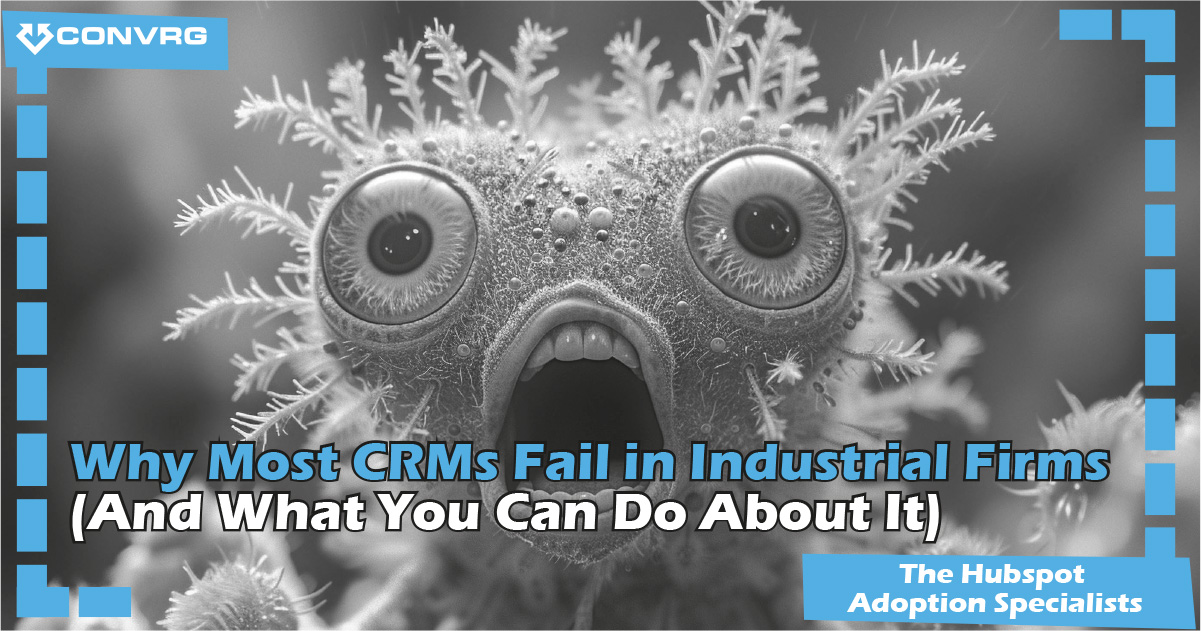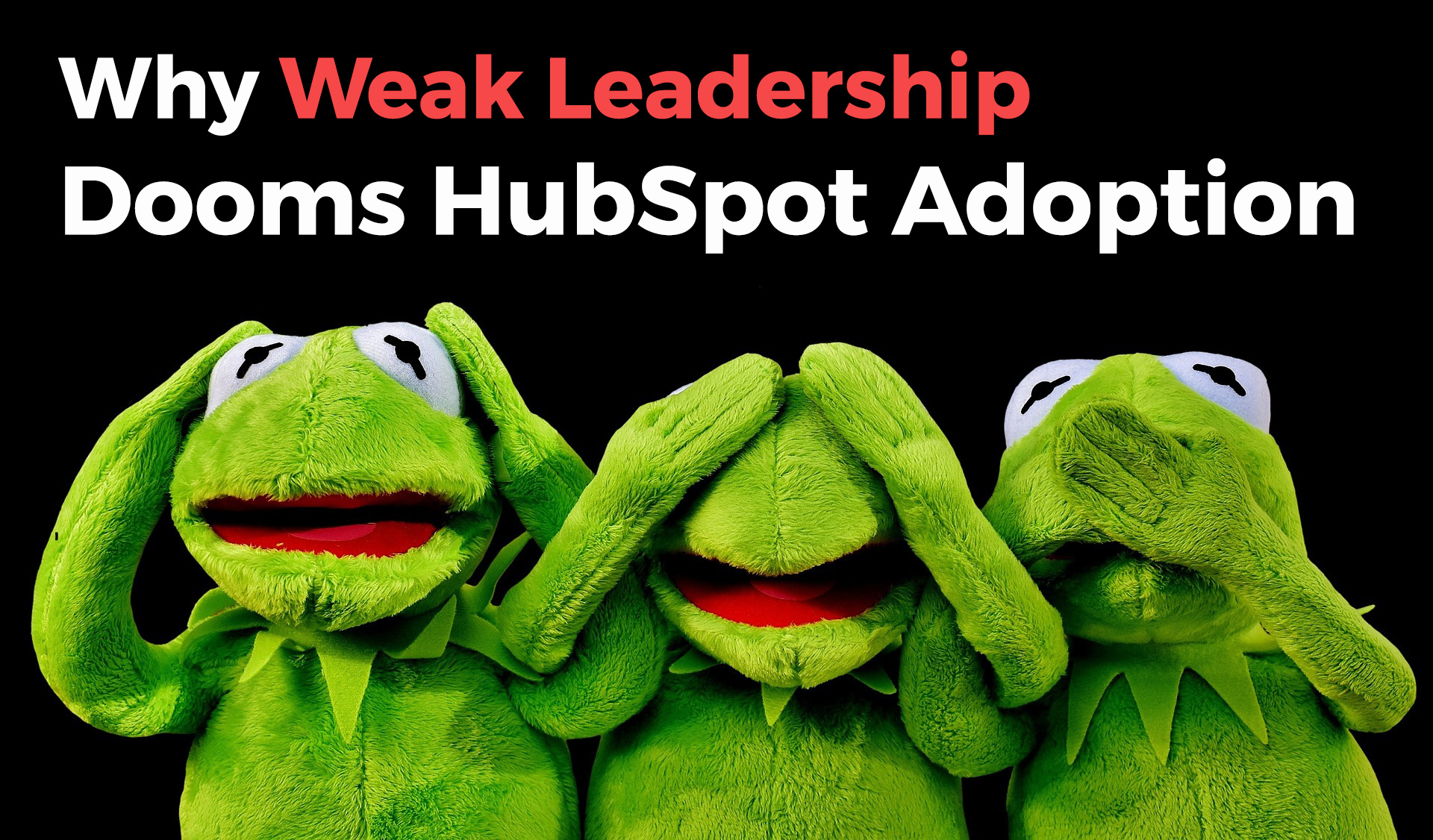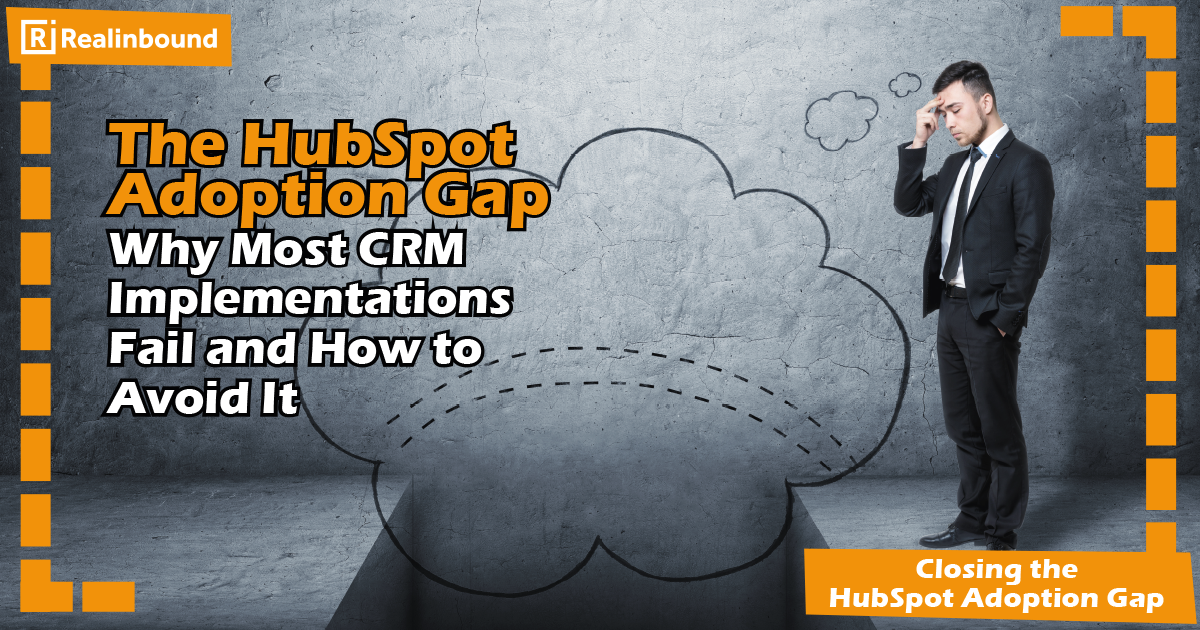Introduction: When CRM Becomes a Cost Centre
If you're leading operations, marketing, or transformation inside an industrial B2B firm, chances are this story feels familiar.
Your company invested heavily in HubSpot—or another CRM. You had the rollout, the training, the integrations. For a few months, it felt like progress.
And then?
- Sales stopped updating deals.
- Marketing lost visibility into what was converting.
- Customer service started using spreadsheets again.
- Leadership disengaged from the dashboards.
The CRM didn't transform the business. It became just another system. Another “thing” to manage.
At CONVRG, we’ve worked with dozens of industrial and manufacturing businesses facing this exact problem. Their CRM isn’t broken—but it’s not performing either.
And it’s almost never the software.
The real issue is adoption. And adoption failure in industrial firms has patterns.
In this article, I’m going to break down the core reasons why most CRMs underperform in industrial environments—and show you how to build a system that actually works.
- CRM Is Treated as a Tool, Not a Transformation
One of the biggest mistakes we see in industrial firms is the assumption that a CRM is just “software.”
It’s something IT or marketing should install and run. You buy the licences. You import your contacts. You train the sales team. Job done.
But CRMs—especially powerful, flexible ones like HubSpot—are not just tools. They’re systems of record and engagement. When deployed properly, they shape the way your business works.
When deployed poorly, they quietly reinforce misalignment, inefficiency, and siloed thinking.
In a manufacturing setting, where product complexity is high, buying cycles are long, and stakeholders are many, a CRM must function as the central nervous system of the business. Not an add-on. Not a department-led project.
What to do instead:
Start with your business strategy. Ask:
- What does success look like this year?
- What data do we need to make better decisions?
- What workflows are slowing us down?
- How do our teams interact with prospects and customers?
Only when those answers are clear should you configure the CRM. At CONVRG, we use the SIMPLIFI Framework to guide this process, starting with Setting the Scene: connecting your CRM to your strategic goals—before a single field is created.
- Leadership Delegates CRM Instead of Owning It
The second major reason CRMs fail in industrial firms? Lack of executive ownership.
It’s almost always the same story:
- The CRM is purchased by the marketing or IT team.
- Implementation is handed to operations.
- Sales begrudgingly adopts it.
- The board never logs in.
This creates what we call “the Adoption Gap”—a disconnect between leadership’s expectations and the reality of what the system can (or can’t) deliver.
Let me be blunt: if your COO or Commercial Director doesn’t engage with the CRM, no one else will either. Not consistently. Not meaningfully.
And if the board isn’t reviewing CRM dashboards, what’s the point of collecting the data?
What to do instead:
Make CRM a leadership project—not a departmental one.
- Assign a C-level sponsor.
- Define what data the board needs, and build reports accordingly.
- Make CRM metrics part of your leadership rhythm—monthly, quarterly, and annually.
SIMPLIFI’s Lead the Adoption phase is where we build this governance. Because if you want your CRM to reflect your business, it has to be driven by those who lead it.
- Processes Aren’t Mapped Before the CRM Is Built
Let’s say you have five sales teams working across three divisions and multiple territories. Each team has their own way of qualifying leads, pricing deals, and managing pipelines.
You introduce HubSpot and ask everyone to follow one process. Chaos.
This is where most CRM implementations go wrong: they apply technology before standardising process.
We’ve seen manufacturers where the same contact status meant five different things across teams. Where lead handovers happened over email or not at all. Where no one could agree on what “qualified” actually meant.
And because process wasn’t mapped first, the CRM just became another reflection of internal inconsistency.
What to do instead:
- Run collaborative process-mapping sessions with sales, marketing, and service.
- Define lifecycle stages, deal stages, lead statuses, and task responsibilities.
- Document handoffs and set SLAs (service level agreements) between teams.
- THEN configure the CRM to match.
In SIMPLIFI, this happens in Map the Processes. It’s not glamorous. It doesn’t involve tech. But it’s the foundation of any scalable CRM.
- Sales Reps Don’t See the Value
This is where many CRM projects die.
Reps are told to use the CRM. They log in. They click around. They update a few fields. And then… they stop.
Why? Because they don’t see what’s in it for them.
In industrial firms, where deals are complex, cycles are long, and relationships are critical, sales teams often see CRMs as “admin” or “compliance” rather than a tool for performance.
If your reps believe the CRM is more effort than it’s worth—they will find workarounds. They’ll build their own trackers. They’ll delay data entry. They’ll disengage.
What to do instead:
- Involve sales early in CRM design.
- Automate admin tasks like activity logging, follow-up reminders, and deal tracking.
- Build dashboards that show them their own performance, not just what management wants to see.
- Reward CRM adoption in the same way you reward results.
When sales sees CRM as a tool for their success—not just leadership’s—they adopt it willingly. Not under duress.
This is part of the Implement the Changes and Fix What Breaks + Iterate stages in SIMPLIFI. Adoption isn’t a one-time push. It’s an ongoing engagement.
- Reporting Isn’t Tied to Real Business Decisions
In many industrial firms, CRM reporting is either:
- Over-simplified (basic activity reports, generic dashboards)
- Over-complicated (100+ custom fields, unreadable scorecards)
Neither is useful.
The purpose of CRM reporting is simple: to help leaders make better decisions. To show you:
- What’s converting (and what’s not)
- Where leads are stalling
- Which products are gaining traction
- Where pipeline is growing or shrinking
If your CRM reports aren’t tied to strategic questions, then they’re not driving change.
What to do instead:
- Identify the key decisions each department needs to make.
- Map the reports required to support those decisions.
- Build dashboards for each role—executive, management, operational.
- Review those reports regularly. Adjust KPIs and metrics as the business evolves.
This is part of SIMPLIFI’s Plan the Way Forward—where we align reporting with leadership cadence and decision-making flow.
- There’s No Roadmap for Continuous Improvement
Let’s say you’ve fixed the basics. You’ve mapped the processes. You’ve cleaned the data. The CRM is working.
Now what?
Too many firms stop here. They declare success. They move on. And within a year, the CRM starts slipping again.
Why? Because there’s no plan to keep it aligned.
Your business evolves. Products change. Teams grow. Strategy shifts. If your CRM doesn’t evolve with it, misalignment creeps back in.
What to do instead:
- Build a quarterly CRM governance cadence: audit, review, prioritise, implement.
- Monitor usage data: what’s being used, ignored, or avoided?
- Solicit user feedback and treat it seriously.
- Revisit strategic goals every 6–12 months and adjust workflows/reporting accordingly.
In SIMPLIFI, this is baked into Fix What Breaks + Iterate. The most successful CRM systems we’ve built? They don’t stand still. They improve with the business.
- CRM Ownership Is Fragmented Across the Business
One of the more subtle but dangerous failure points: nobody really owns the CRM.
Marketing owns campaigns. Sales owns pipelines. IT owns the platform. Ops owns reporting. But no one owns the full system.
This creates a “not my job” culture. Everyone assumes someone else is managing it. And soon, no one is.
What to do instead:
- Establish a cross-functional CRM council.
- Define clear ownership of data, automation, reporting, and training.
- Make CRM health a standing item in ops meetings.
Ownership must be centralised in purpose, decentralised in contribution. SIMPLIFI supports this through CRM governance design.
- Poor Data Hygiene Undermines Everything
Let’s talk about data.
If your contacts are incomplete, your company records are duplicated, and your properties are a mess—no amount of reporting will save you.
We’ve seen clients where:
- 50% of contacts were missing job titles
- 20% of deals weren’t assigned to a rep
- Email campaigns were being sent to stale lists
CRM data quality is often ignored until it becomes unmanageable.
What to do instead:
- Define your minimum data set—what fields must always be completed?
- Use automation to enforce standards and cleanse inputs.
- Run quarterly audits and clean-ups.
- Create data ownership responsibilities by team.
This isn’t glamorous work. But it’s essential. Bad data = bad decisions.
- The System Doesn’t Reflect the Buying Journey
In complex B2B sales, the buying journey is rarely linear. Multiple decision-makers. Long cycles. Technical evaluations.
But many CRM setups still reflect a simple three-stage funnel.
This disconnect causes reporting gaps, misaligned handovers, and poor forecasting.
What to do instead:
- Map your actual buyer journey—from awareness to onboarding.
- Match CRM stages, properties, and automation to that journey.
- Train teams on what each stage means—and what triggers a move.
SIMPLIFI integrates Interview Everyone to gather this intel, and Map the Processes to lock it in.
- CRM Success Isn’t Measured Beyond Go-Live
Final point. The reason many CRMs fail? Success is defined as implementation, not impact.
The project is declared “done” once workflows are built and users are trained. But no one checks in 3, 6, or 12 months later to ask:
- Is it being used?
- Is it driving decisions?
- Is it scaling with us?
What to do instead:
- Define success metrics before implementation.
- Reassess adoption and impact every quarter.
- Report CRM performance at board level.
We call this CRM as a Management Control System. It’s not just a tool. It’s infrastructure.
Conclusion: CRM Doesn’t Fail—Systems Do
If you’re seeing the cracks in your CRM, don’t blame the software.
Blame the misalignment.
Because CRMs fail when:
- Leadership delegates, not leads
- Strategy and system are disconnected
- Users disengage
- No one owns the outcomes
But the good news? Every one of those challenges is solvable—with the right framework, the right mindset, and the right leadership.
At CONVRG, we help industrial businesses close the CRM Adoption Gap using the SIMPLIFI Framework—a leadership-led, system-based approach that turns HubSpot into a strategic asset.
Next Step: Ready to See Where You Stand?
CRM Adoption Scorecard
Get your adoption readiness score—and a roadmap for improvement.
Take the Scorecard
Hidden HubSpot Tax Calculator
Estimate what poor adoption is costing your business right now.
Use the Calculator







